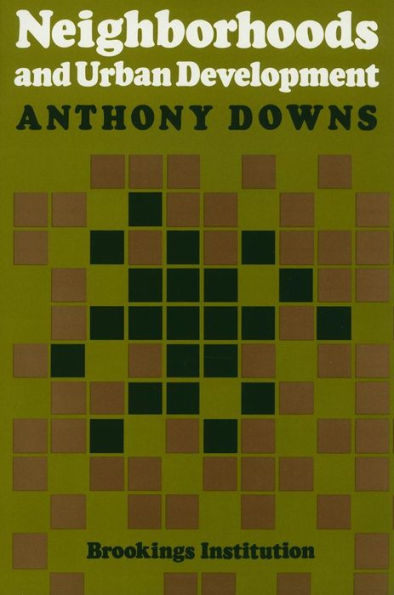This book argues that such flows of residents are not random. Rather, they are closely linked to overall migration into or out of each metropolitan area and to the way U.S. cities develop. Downs contends that both urban development and the social problems it spawns are built upon social arrangements designed to benefit the middle-class majority. Racial segregation divides housing in each metropolitan area into two or more markets. Socioeconomic segregation subdivides neighborhoods within each market into a class hierarchy. The poor live mainly in the oldest neighborhoods, close to the urban center. The affluent live in the newest neighborhoods, mostly at the urban periphery. This separation stems not from pure market forces but from exclusionary laws that make the construction of low-cost housing illegal in most neighborhoods. The resulting pattern determines where housing is built and what housing is left to decay.
Downs uses data from U.S. cities to illustrate neighborhood change and to reach conclusions about ways to cope with it. he explores the causes and nature of racial segregation and integration, and he evaluates neighborhood revitalization programs, which in reviving part of a city often displace many poor residents. He presents a timely analysis of the effect of higher energy costs upon urban sprawl, argues the wisdom of reviving older cities rather than helping their residents move elsewhere, and discusses the advantages and disadvantages of public and private policies at the federal, state, metropolitan-area, city, and neighborhood levels.
"This book argues that such flows of residents are not random. Rather, they are closely linked to overall migration into or out of each metropolitan area and to the way U.S. cities develop. Downs contends that both urban development and the social problems it spawns are built upon social arrangements designed to benefit the middle-class majority. Racial segregation divides housing in each metropolitan area into two or more markets. Socioeconomic segregation subdivides neighborhoods within each market into a class hierarchy. The poor live mainly in the oldest neighborhoods, close to the urban center. The affluent live in the newest neighborhoods, mostly at the urban periphery. This separation stems not from pure market forces but from exclusionary laws that make the construction of low-cost housing illegal in most neighborhoods. The resulting pattern determines where housing is built and what housing is left to decay.
Downs uses data from U.S. cities to illustrate neighborhood change and to reach conclusions about ways to cope with it. he explores the causes and nature of racial segregation and integration, and he evaluates neighborhood revitalization programs, which in reviving part of a city often displace many poor residents. He presents a timely analysis of the effect of higher energy costs upon urban sprawl, argues the wisdom of reviving older cities rather than helping their residents move elsewhere, and discusses the advantages and disadvantages of public and private policies at the federal, state, metropolitan-area, city, and neighborhood levels.
"
Neighborhoods and Urban Development
202
Neighborhoods and Urban Development
202Paperback(New Edition)

Product Details
| ISBN-13: | 9780815719199 |
|---|---|
| Publisher: | Bloomsbury Academic |
| Publication date: | 10/01/1981 |
| Edition description: | New Edition |
| Pages: | 202 |
| Product dimensions: | 6.00(w) x 8.90(h) x 0.60(d) |
| Lexile: | 1470L (what's this?) |
